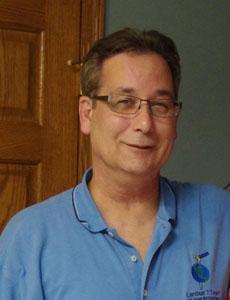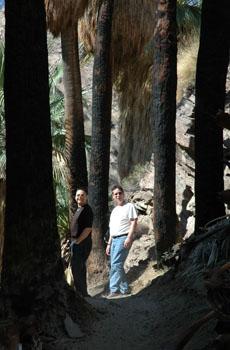Meet EPA Scientist Ken Bailey, M.En.

Ken Bailey is currently on detail to EPA's Office of Research and Development from the Office of the Secretary of the Interior, Assistant Secretary/Indian Affairs. He is an environmental scientist specializing in remote sensing. Ken is a citizen of the Muscogee Nation of Oklahoma working with EPA's Tribal Science Council and partners on the web based geospatial tool Tribal-Focused Environmental, Risk and Sustainability Tool (Tribal-FERST). The work he and his colleagues are doing promotes the health, safety and welfare of tribes across the nation and is building better EPA government-to-government relationships with American Indian tribes.
How does your science matter?
I work directly with American Indian tribes on Tribal-FERST, a decision tool for environmental and ecological health. A few years ago, I was at a National Tribal Science Council meeting in Michigan, and I ran into two EPA scientists who were working on a web-based geospatial tool for environmental risk assessment. I watched their presentation, and having background in that area as well as knowing that the tribes wanted similar technology to solve some environmental problems they faced, my colleagues and I started working with them on Tribal-FERST.
We started a pilot project with the Pleasant Point Passamaquoddy Tribe of Maine. Not long after, other tribes expressed interest in using the tool, too. It’s available on the web and hundreds of tribes are using it to address a variety of unique environmental and health challenges. Tribal-FERST provides the technology and scientific information that can help tribes prioritize environmental issues and understand potential exposures to harmful substances in their communities so they can work to reduce their risks.
I also work with the Tribal Science Council, a group made up of EPA and tribal representatives who collaborate to produce scientific solutions to environmental and health problems that tribes face.
When did you first know you wanted to be scientist?
When I was about eight years old, I really wanted a chemistry set to play with and do experiments. I got one for Christmas that year and fell in love with science.

Tell us about your background.
I started out as a pre-med student at the University of Tulsa. I became interested in environmental sciences and transferred to the University of Cincinnati where I earned my Bachelors of Science degree in environmental science. I got my Masters of Science degree in environmental science from Miami University in Ohio.
While I was at the University of Cincinnati, I took a course on remote sensing that really captivated me. Remote sensing uses satellite imagery to gather data on, in my case, the health of the land and environment. In graduate school I was awarded a grant from NASA to study remote sensing. My work on remote sensing grew from there.
What do you like most about your work?
I think working with the tribes and being able to give back to the community using the science and the knowledge I’ve obtained over the years is really rewarding. I also enjoy working with all the other scientists here at EPA.
If you could have dinner with any scientist, past or present, who would you choose and what would you like to ask them?
It’s a hard decision because Einstein is one of my heroes. However, if I had to choose, I’d want to have dinner with a famous American Indian scientist: John Herrington of the Chickasaw nation. He was the first American Indian astronaut. He flew on the space shuttle SPS113. That’s quite an accomplishment.

I’d like to ask him what his experiences were going to college as a non-traditional student and how do we encourage our young people in the K-12 grades to study science and math so that they can get into a good college to study science?
If you weren't a scientist, what would you be doing?
If I wasn’t a scientist, I’d probably still be living in Oklahoma on tribal land or I’d be working as a medical doctor.
Any advice for students considering a career in science?
You should study math and a broad range of sciences so that you have a wide range of exposure to the science field. Study hard and never lose sight of your dream of being a scientist. Internships are important as well because they help you reaffirm that you’ve made the right choice in your field of study.
Editor's Note: The opinions expressed herein are those of the researcher alone. EPA does not endorse the opinions or positions expressed.
